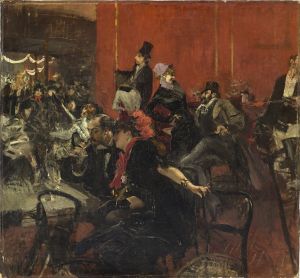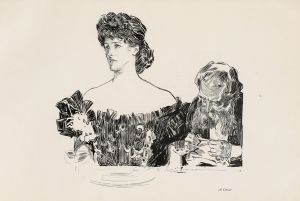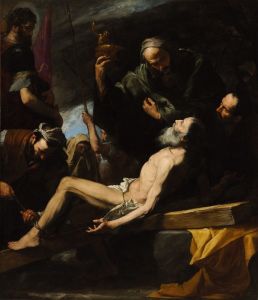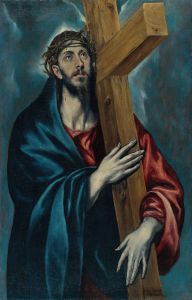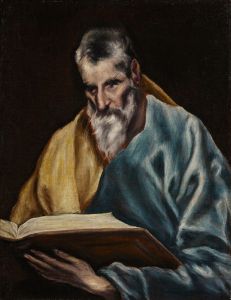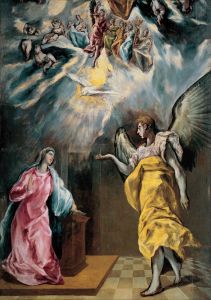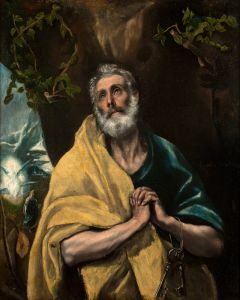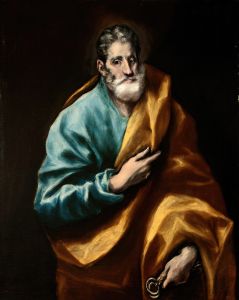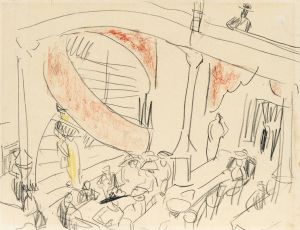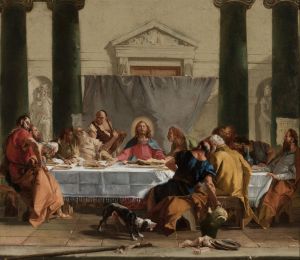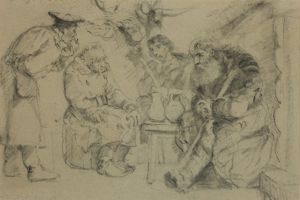
The Feast in the House of Simon
A hand-painted replica of El Greco (Domenikos Theotokopoulos)’s masterpiece The Feast in the House of Simon, meticulously crafted by professional artists to capture the true essence of the original. Each piece is created with museum-quality canvas and rare mineral pigments, carefully painted by experienced artists with delicate brushstrokes and rich, layered colors to perfectly recreate the texture of the original artwork. Unlike machine-printed reproductions, this hand-painted version brings the painting to life, infused with the artist’s emotions and skill in every stroke. Whether for personal collection or home decoration, it instantly elevates the artistic atmosphere of any space.
"The Feast in the House of Simon" is a painting by the renowned artist El Greco, whose real name was Domenikos Theotokopoulos. El Greco was a prominent painter of the Spanish Renaissance, known for his distinctive style that combined elements of Byzantine tradition with Western painting techniques. This particular work, "The Feast in the House of Simon," is a significant example of his mature style, characterized by elongated figures and dramatic use of color and light.
The painting depicts a biblical scene from the New Testament, specifically from the Gospel of Luke (7:36-50). It illustrates the moment when Jesus is dining at the house of Simon the Pharisee, and a sinful woman, often identified as Mary Magdalene, anoints Jesus' feet with ointment and wipes them with her hair. This act of devotion and repentance is central to the narrative, highlighting themes of forgiveness and redemption.
El Greco's interpretation of this scene is notable for its emotional intensity and spiritual depth. The composition is dynamic, with the figures arranged in a way that draws the viewer's eye toward the central interaction between Jesus and the woman. Jesus is typically depicted with a serene and compassionate expression, emphasizing his role as a forgiving savior. The woman, in contrast, is often shown in a posture of humility and reverence, underscoring her penitence.
The use of color in "The Feast in the House of Simon" is characteristic of El Greco's work. He employed a vivid palette, with rich blues, reds, and golds, to create a sense of otherworldly illumination. This use of color, combined with his unique handling of light, gives the painting a spiritual and ethereal quality, inviting viewers to contemplate the divine nature of the scene.
El Greco's style was ahead of his time, and his work was not fully appreciated until centuries later. His paintings often feature elongated figures and a dramatic use of perspective, which were unconventional during his lifetime but later influenced modern artists. In "The Feast in the House of Simon," these stylistic choices serve to enhance the emotional impact of the scene, drawing viewers into the narrative and encouraging them to reflect on its moral and spiritual implications.
The exact date of the painting's creation is not definitively known, but it is generally believed to have been completed during El Greco's later years in Spain, likely in the early 17th century. The painting is part of a series of works by El Greco that explore similar themes of faith and redemption, showcasing his deep engagement with religious subjects.
Today, "The Feast in the House of Simon" is held in high regard as a masterpiece of religious art. It exemplifies El Greco's unique artistic vision and his ability to convey complex theological concepts through his innovative use of form and color. The painting continues to be studied and admired for its artistic and spiritual significance, reflecting El Greco's enduring legacy as one of the great masters of the Renaissance.





